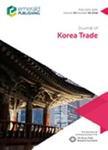版权所有:内蒙古大学图书馆 技术提供:维普资讯• 智图
内蒙古自治区呼和浩特市赛罕区大学西街235号 邮编: 010021

作者机构:Asian Dev Bank Mandaluyong City Philippines
出 版 物:《JOURNAL OF KOREA TRADE》 (J. Korea Trade)
年 卷 期:2018年第22卷第3期
页 面:228-246页
核心收录:
主 题:Value chain Backward linkage Forward linkage Input-output data International trade Spillover effect Substitutability Tariff barrier
摘 要:Purpose The purpose of this paper is to demonstrate that higher tariffs under protectionism will have significant indirect impact through industrial forward and backward linkages, causing greater economic losses to tariff-imposing economies than to exporting countries. Design/methodology/approach The authors use partial equilibrium analysis based on unique multi-regional input-output (IO) data in measuring the second-round spillover effects of higher tariffs, also investigating the scenario of plausible substitutability across import sources as well as sectors based on historical import intensity data. Findings Higher tariffs do not only have a direct impact, but also a significant indirect impactthrough forward and backward linkages. Indirect effects can be extensive across economies and sectorsboth in forward and backward linkages such as in transportwhen value chains are longer and more complex. When possible substitution effects between different import sources and sectors are considered, negative forward linkage effects can be smaller, while negative backward linkage effects become more pronounced. Nevertheless, both negative effects are still found to be much bigger in indirect impacts compared with direct impacts. Research limitations/implications This implies that higher tariffs, including administrative trade measures such as anti-dumping duties and countervailing duties could ironically entail rather greater negative impact on the tariff-imposing importing economies by damaging their exports of domestic sectors using the targeted imports as intermediate inputs, which could be severe if the importing sector has a long value chain in particular through deep forward linkages. Originality/value This paper uses unique multi-regional IO data covering 45 economies 35 sectors in analyzing the second-round spillover effects across countries and sectors and employs comparative statics under different scenarios.